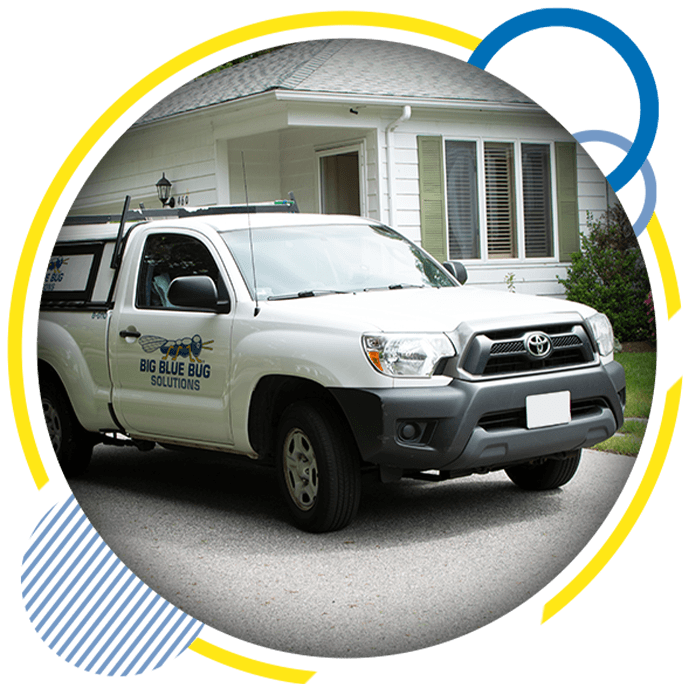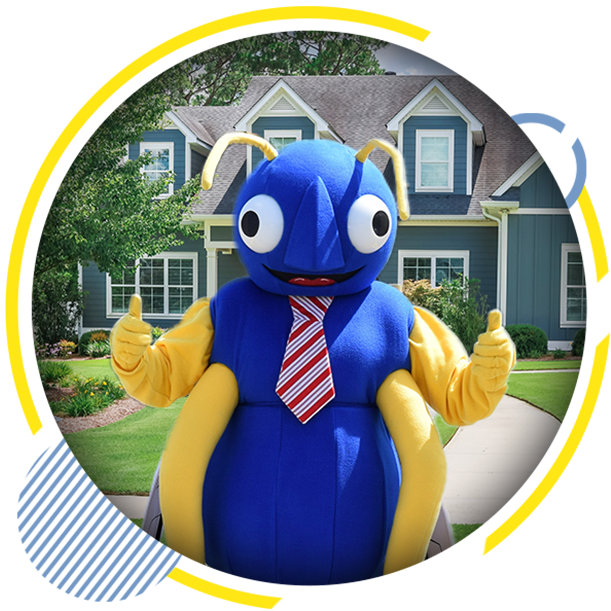
Pest Control: Spider Control Made Simple For Connecticut Residents
Few pests fill people with the same sense of dread as spiders. They play a prominent role in our nightmares and fill more bad-guy roles in horror movies than any other creature unable to operate a chainsaw.
In real life, spiders are far from the monsters we expect them to be. They feed on a multitude of harmful insects, such as ticks, mosquitoes, and flies, keeping their populations down and acting as nature's pest control.
Experts estimate that spiders consume over 880 million tons of mosquitoes every year. Spiders are very commonplace arachnids, with over 45,000 known species and over 3 million spiders for every human on earth; however, because they are nocturnal and ninja-like in their skill at staying out of sight, spiders are rarely seen.
All spiders have four pairs of legs, no antennae or wings, and almost all have multiple sets of eyes. Most spiders don't have good vision, regardless of how many pairs of eyes they have, and rely on their other senses to hunt and escape predators. All spiders can produce silk, but many choose not to weave webs and chase down their prey instead.
One of the more concerning spider characteristics to us, as homeowners, is the ability of a female spider to lay up to 3,000 eggs. A single common household spider inside your home, protected from natural predators by the walls of your house, can be a start of a truly nightmarish infestation.
All spiders produce venom, but since most of their prey is the size of a mosquito or, at most, a grasshopper, the toxicity and amount of that venom are usually relatively small. Only two spider species in the United States produce enough venom to threaten a human; the brown recluse and the black widow. Unfortunately, one of those species is common in our state
Let's look at the types of spiders in Connecticut that you might encounter around your property and learn how to differentiate harmless spiders from venomous spiders in Connecticut, how to get rid of spiders if they infest your home, and if you need professional help showing invading spiders the door, how to find reliable pest control in Connecticut.
The Types Of Spiders You May Find In Connecticut
While spiders might be beneficial outside the walls of your home, once they make their way inside or if their numbers grow out of proportion on your property, they can become a major issue to contend with.
In order to develop an effective treatment plan for the spider infestation, it's paramount to correctly identify the spider species you're dealing with. There are hundreds of spider species in our state, but in your home, you're likely to run into the following suspects:
- Black widow spiders are one of the largest spiders in Connecticut and the only species that carry venom toxic enough to endanger human beings. They are usually between 1 and 1 3/8 inches big, with a glossy black body and a telltale red hourglass mark on the abdomen. Black widow spiders commonly hang in their irregularly shaped webs which are usually close to the ground. Black widow spiders are not aggressive but will bite if threatened. Their venom attacks the nervous system. You will experience severe pain, burning, and swelling at the bite site, then experience abdominal pain and high blood pressure with stiffening muscles as time goes by. Most adults will be able to recover from a black widow bite without much difficulty, but it can be terminal to a child or our four-legged friends, so it's best to seek immediate medical attention after a bite.
- Cellar spiders are between 1/4 and 3/8 of an inch in size with fragile, small bodies and long skinny legs. Cellar spiders can be any shade between yellow and grey, and they prefer dark, damp environments. They weave loose, tangled webs and spend most of their time close by, waiting for an insect to become trapped in them.
- Yellow garden spiders can grow up to 1 inch in size with black and yellow abdomens and black legs with orange stripes. They are rarely seen inside the house and are mostly outside, in large circular webs that they weave and vibrate if disturbed.
- Harvestmen (daddy longlegs) spiders are technically not spiders. They lack venom and silk glands and so cannot spin webs. Harvestmen are around 1/2 an inch in size but appear much larger thanks to their long, skinny legs. They are harmless, with a mouth that's too small to bite.
- House spiders are the most common spider to encounter in your home, with a name that reflects that. They are 3/16 to 5/16 of an inch big with yellowish-brown bodies and striped abdomen. House spiders weave irregularly shaped, tangled webs that you'll usually find in the upper corners of rooms or rarely accessed areas like crawl spaces, garages, etc.
- Jumping spiders are 1/8 to 3/4 of an inch with thick bodies and short legs. They are most often black or brown. Jumping spiders don't weave webs but instead jump to catch their prey. Like most other active hunting spider species, they will weave silken retreats.
- Orb weaver spiders are a spider species that include multiple subspecies, often wildly different in color and shape. Uniting them is their habit of spinning large circular webs. They usually average between 1/2 and 1 inch in size.
- Wolf spiders are the big, hairy, "assumably" aggressive spiders that we see featured in horror movies. They average between 3/8 and 1 3/8 inches in size and are typically dark brown. They are one of the few species of spiders covered with tactile hairs and are active hunters that chase down their prey instead of catching them in webs. Wolf spiders might look scary enough to fit the tv monster part, but they are usually not aggressive in real life.
- Yellow sac spiders are on the smaller side, growing up to 3/8 of an inch, and are easy to identify by their light yellow bodies. Just like wolf spiders, yellow sac spiders are active predators and don't bother with weaving webs to capture prey.
Most Connecticut spiders are harmless, with the majority not even able to pierce human skin if they do decide to bite. Black widow spiders, however, can be a serious threat, but thankfully, they are easy to identify and stay away from. If you spot black widow spiders on your property or in your home, don't try to handle them yourself; contact a pest control professional immediately.
How Spiders In The House Could Mean A Bigger Problem
Spiders hold no interest in the comforts of your home or crumbs from your morning bagel, as most other invasive pests do. They are dedicated predators motivated by one thing; access to their favorite prey — insects.
If you have a spider infestation in your home or your property, it's because they are feeding on insects, indicating you have a different pest issue you have to deal with.
Factors That Bring Spiders Into Our Homes
Keeping spiders out of your Connecticut home is a lot easier than trying to evict them once they're inside and have set up camp, so let's take a look at what you can do to make your home as unappealing to spiders as possible:
The Best Way To Get Rid Of Spiders And Their Pest Prey
With an annual inspection or an emergency call, our experienced technicians will start with inspecting your property to identify the species of spiders you're dealing with and track down the insect infestation that serves as their food source. Once we have a clear picture of what you're dealing with, we'll start with sealing the passageways insects, and the spiders following them used to enter your home. With that taken care of and no need to worry about additional bugs coming in, we'll develop and apply a personalized treatment plan to kick both spiders and their food sources out of your house.


chECK oUT THE bUZZ!
Unbeatable Pest Control, Unmatched Reviews
-
"They have exceeded expectations. Highly recommend."Alley Bergemann, called before arriving on the day of the appointment, showed up on time, and took care of re-baiting the bait traps as needed. She is patient, polite and answered a few questions I had, all with a pleasant demeanor.- Jonathan P.
-
"Always been amazed by the competence and professionalism of this company."
Their man, Elijah was a gentleman and very knowledgeable professional. He took the time to carefully listen to me when I explained where the ant infestation was found. He explained clearly what he was going to do to address the issue.
- Pete M. -
"GREAT company!"The Big Blue Bug Solutions is a GREAT company with very helpful, courteous technicians. This a company that actually helps you with your problems and not try to sell you something you don't need. I am very pleased, and NO, I have no relatives that work at- Robert M.
-
"Knowledgeable, accurate and incredibly pleasant."I just cannot believe the most amazing experience customer service experience I had with Laura who could not have been more knowledgeable, accurate and incredibly pleasant. It is very rare I leave a review but this encounter deserved one!- Kimberly H.
-
"Always very polite and accommodating."We’ve been using Big Blue Bug for pest control for many years and have been very satisfied! Vince visited today for our regular check in and he is an excellent technician. Thanks, BBB!- Stacey C.
-
"Knowledgeable, respectful, courteous!"
I highly recommend Big Blue Bug Solutions - first - for their customer service. They are professional and efficient and always try to fit me in at a time that is convenient for me. Second, RODNEY IS THE BEST TECHNICIAN!!!!
- Meredith L. -
"Our first service was a great experience!"Peter called to let us know he was on his way and arrived as scheduled. He was very knowledgeable and setup a comprehensive array of traps in each target area to begin capturing the pests and put an end to our troubles.- Mike H.
-
"Personable, friendly, and knowledgeable!"Shoutout to our tech, Jeremy Cote, who has been servicing our bakery in Richmond and has helped us maintain a pest free environment. He is personable, friendly, and knowledgeable. We highly recommend big blue bug to friends, family, and customers!- Becky M.


WE'RE AVAILABLE
EVERY DAY, ALL DAY,
365 DAYS A YEAR
Say goodbye to automated systems! Our team is at your service round the clock, every single day of the year, guaranteeing a personalized and immediate response to your queries.
